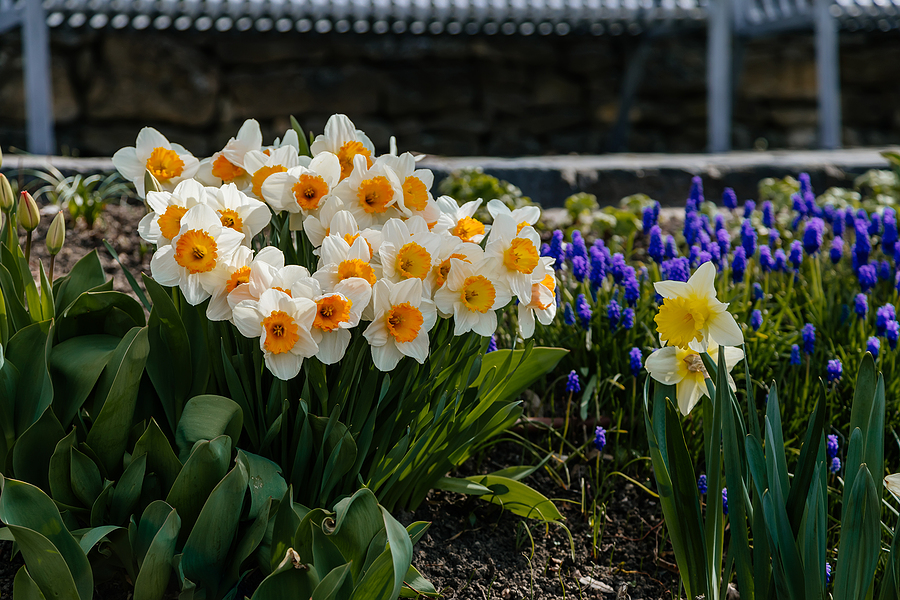Albuquerque Gardening with Daffodils – A Smart Move You Should Make for a Stunning Garden in Spring 2023

Every year when spring arrives, a tiny part of us looks forward to the appearance of the first daffodils in bloom.
These are, without a doubt, among the most courageous flowers. They are one of the very first blooms to appear each year to announce the approach of spring, and they are known to persist even in the harshest climates.
These tiny perennial bulbs are responsible for transforming an ordinary garden field into an undulating golden blanket of bloom each year. This extraordinary transformation occurs during a mystical window of time that is hypnotizing—these flowers peak by the middle of the month during their most floriferous month, March. Early and late bloomers lengthen the season by bookending the crescendo in March.
On the other hand, there have been reports of flowers blooming as far back as January and as recently as the first week of May. This range in the bloom period has less to do with the garden’s zone and more with the types or “cultivars” of daffodils chosen.
The arrival of Rynveld’s Early Sensation Daffodil bulbs is an excellent place to start because this variety is known for its exceptionally early flowering. In some years, the first week of January is perfect for observing it in full bloom. Finish up the year with several tazetta kinds without names, which typically bloom during the first week of May. Plant enough of a single type so that you may take cuttings and bring them inside without making too much of a dent in the overall show during this blooming period. If you regularly have fresh flowers in the house, daffodils may be a reliable bloom supply even when most other buds are still dormant.
Plant a few new types of narcissus each year, including cultivars considered “Johnny-come-latelies” in the world of narcissus hybridization. Most daffodils are bred in Holland; however, there are other breeders in England, Ireland, and the United States. A double variety known as Replete has recently become a fan favorite. Its gentle salmon, cream corona, and cream collar make it excellent for particular spaces in the house, and when it’s in bloom, it never fails to amaze guests who come to visit. In a nutshell, it appears to be a delectable sweet. It is important to note that deer will not consume daffodils, even though they could look appetizing.
‘Replete’ Double Daffodil
The earlier in the season one can acquire bulbs, the higher their chances are of getting the most fantastic selection of these more recent cultivars. After Labor Day, you’ll start seeing catalogs for various bulbs. Make it a priority to place your purchase by the end of August or the beginning of September.
On the other hand, the timing of planting bulbs can be more relaxed, if not entirely forgiving. I’ve started daffodil bulbs in the ground as early as October and, dare I say it, as late as January. I advise planting the bulbs as soon as possible if they have yet to become brittle after being kept in a cold, dark environment for an extended period. It is also important to note that while it is a good idea to keep bulbs in the refrigerator, it is not a good idea to store them with food because this can cause harm to the bulbs. Apples, of all fruits, appear to be the worst offenders because they release ethylene gas, which is harmful to the developing flower embryo.
Daffodils are sociable flowers that get along well with other spring bulbs and look fantastic when planted in groups. They begin the season by singing in harmony with crocuses, and later in the season, you’ll find them singing among Spanish bluebells and snowflakes. Crocuses are one of their favorite springtime flowers. Daffodils go nicely with early perennials like phlox (both Phlox subulata and divaricate), heuchera, and Virginia bluebells.
This spring, if you come across daffodils, consider where you might be able to plant some in your garden so that you can enjoy their cheery presence for many years to come.
